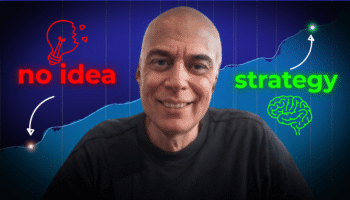Back in the 1980s, legendary trader Richard Dennis set out to prove that great traders could be trained—not born. He taught a group of complete beginners his simple rules, and together they became known as the Turtle Traders. Their breakout strategies went on to make millions.
In my latest YouTube video, I recreate this iconic method step by step using modern tools like Strategic One y AlgoCloud. You’ll discover:
-
📈 How the Canal Donchian breakout works for both long and short trades.
-
⏳ The short-term 20/10 system versus the long-term 55/20 system.
-
🛠️ How to set up filters with moving averages, volatility rules, and risk controls.
-
💡 Why the strategy accepts many small losses to capture a few huge wins.
-
⚙️ A full walkthrough of building, testing, and deploying strategies in AlgoCloud.
This isn’t just theory—you’ll see the equity curves, backtests, and risk management in action. By the end, you’ll understand why this decades-old system still attracts traders today.
👉 Ready to dive into one of the most fascinating trading experiments ever?
🎥 Watch the full video on YouTube and see how Turtle rules can still guide profitable trading in modern markets.
transcripción:
Hola, comerciantes.
Today, I have prepared another strategy for you.
It is a breakout strategy based on the Donchian channel, which I borrow from a book actually.
This book is by Curtis Spade, who was a member of the legendary Turtles Group.
He was part of Richard Dennis’ experiments in which a group of young people was taught how to trade, enabling them to generate money for him.
And today, I will teach you what this strategy looks like.
Now, let’s get to it.
So, this whole strategy is based on breakouts.
For long positions, it is based on breaking through the highest highs.
For short positions, we enter a short position when the price breaks through the lowest lows.
In this video, I will show you two types of this strategy that Richard Dennis used.
One is a short-term strategy, and the other one is a long-term strategy.
Let’s take a look at the short-term one, which is a breakout of the 20-day highest high.
The exit was when the price broke back to the lowest low in 10 days.
The long-term strategy is based on when the price broke through the 55-day high and exited at 20-day low.
According to the book, the strategy uses trend filters only when the strategy enters a long position when the short-term moving average is higher than the long-term moving average with a period of 350.
As soon as the short-term EMA is below the long-term EMA, we take short-term short trades.
For simplicity, today, I will only show you long trades.
Now it’s time to switch to Strategic One software.
Go to the Algorithm tab, and we will build for the Algo Cloud Engine.
Here, I select that I want to use the single asset cloud strategy.
I will build a short-term strategy for ETS, specifically for the NASDAQ with the symbol QQQ.
Empecemos.
First, I will set the triggers to on bar close because I will enter and exit at the end of the day.
And the first condition is that we want the closing price to break through the highest high in 20 days.
So the close is higher than the highest high.
Maximum high in 20 days.
Close zero, index zero, because I want the price on the current candle, so on the current bar at the end of the day, to be greater than the highest high in 20 days calculated from the previous candle.
Next in line is the exit condition, where we want to exit as soon as the price breaks through the lowest low in ten days.
So, the exit condition is again close.
The current zero is less or lower than the lowest low, which is the minimum function of the low over 10 days.
And right now, we can try to test it.
There is definitely some power here, so it makes sense.
And according to the book, there is also a stop-loss, which is actually double the average ATR volatility over 20 days.
So, I will add the stop-loss.
And let’s test it.
To be honest, the results are pretty much the same.
I will add the filter condition I mentioned earlier when the short-term moving average is above the long-term moving average.
I used an exponential moving average, so the EMA from the close for 20 days is higher than the long-term EMA for 350 days.
So, we have EMA 20 is greater than EMA 350.
Let’s try it again.
And as you can see, the drawdown has decreased to less than 2%.
The number of trades is 93.
And when I look into it, here are the individual years.
It’s only on one market, so there won’t be any big results.
But the strategy is profitable.
Short stop-loss, long profits.
There are fewer of them, but they are bigger.
So, I will save this strategy like it is and I will save it under the name Turtle Short Term.
Now, I will move on to the long-term strategy.
I create the same strategy, but a long-term one, which I will trade on the NASDAQ 100 Index Basket.
First, I have to switch the strategy type to stock picker.
And as I mentioned before, the long-term strategy has different periods.
The highest high is 55.
The lowest low is 20.
So, what we have to do is to revise the highest high period to 55 and the lowest low to 20.
And what I’m going to do now is delete this condition and try it for now without a condition, without filtering, because I want to test it just like it is.
But I still need to set the position score.This means that we will trade a maximum of 10 positions, and also I will add momentum to the position score.
We will sort by momentum.
The higher the momentum, the better the stock and it will come to the forefront.
Now, the market settings.
So here we have the conditions and we choose the Nasdaq 100 market.
Once you’re ready, you can test it.
Well, now it looks good, except, uh, we have a big drop here.
So I will try putting back the condition I deleted earlier, and we will test it again.
The drawdown has decreased a little, that’s, that’s for sure, but it’s still kind of choppy.
I’ll try not to use the trend filter on individual stocks, but I will consider the overall mar- market.
So I will filter by ETF, meaning I will add another market, like a soft chart, and it’s gonna be QQQ.
So, I will filter by the ETF market and not by individual stocks.
And now, again, run the full backtest.
And, yes, it’s improved a little.
It’s not such a big fluctuation anymore.
And we could also try adding a volatility filter where we say that the current average volatility over 10 days will be greater than the average volatility over, let’s say, 200 days, so that we only take the more volatile markets.
And I think, honestly, the results have got a little worse, so let’s try taking lower markets with lower volatility, which I think might be a little bit better.
And finally, what we can see here is a smoo- smoother equity curve.
The drawdown has decreased to 2.4, 2.4%, and the percentage of profitable trades is only 32%, but that’s because the strategy works a little differently here.
It simply has lots of losses and few profits, but the losses are very small.
Here you can see that losses are very small and more frequent, but when there’s a profit, it is many times higher and longer.
So that’s it.
I will save the strategy as Turtle Long Term this time.
And now let’s deploy it, these strategies, to AlgoCloud.
I will switch to AlgoCloud and try to load the strategy here.
So open AlgoCloud, go to Algo Wizard, and load the strategy, set it to short term, and let’s see if it loads as it should.
I can see that the strategy is exactly the same, and I will deploy the strategy on the demo account.
I click on Start Deploy, select the demo account here, that’s the one I have, and then I know that I have the main QQQ market here, daily timeframe, trigger on bar close for both entry and exit, and I click Next.
Now I can assign a fixed amount to the strategy, a few thousand dollars, or simply leave the 10% of the account as a percentage.
I will set it up so that it’s the same as any other strategy, because on a demo account it’s better if all strategies have the same percentage of the account so that they can be better compared.
Clicking Next again, and here is just some additional information.
Here you can check the code, and now it’s ready to be deployed.
Here I can see that I have it deployed on my demo account, and all we have to do is to deploy the second strategy we created.
I load it absolutely in the same way, and I will run a full backtest.
And the results are the same.
Here we have the name Long Term, same account, demo account, main market, Nasdaq 100 stock basket, and subchart QQQ on which we actually filter the trades.
Trigger on bar close for entry, on bar close for exit.
We will leave the risk at 10% again like before.
Clicking the Next button, and again here you can see the code, and that’s it.
Here I can see that I already have short and long term both strategies deployed on my demo account.
And this was a strategy that was based on Donchian channels, which are actually the highest and lowest lows according to the book written by Chris Pate, based on the strategy devised by Dennis Richard.
Please keep in mind that this was just a demonstration video on how to work with such a strategy.
Of course, you still need to do some robust testing to make sure the periods are strong, that they are in some stable areas, and you need to do more testing before you start trading this strategy live.
If you all have any questions, please drop them in the comments below, and we will gladly answer them.
Have a great rest of the day and see you next video.



